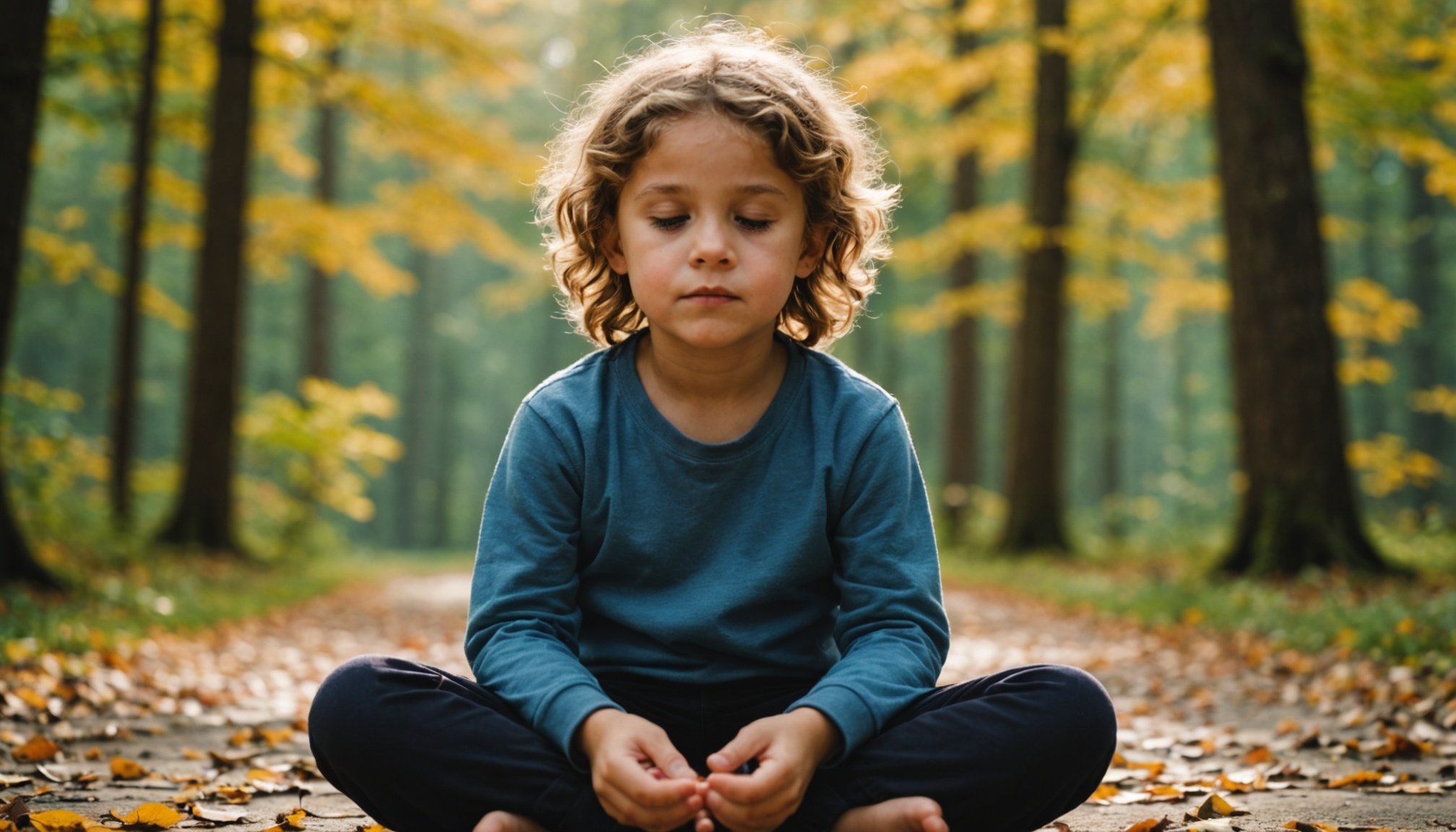Unlocking Emotional Balance: How Consistent Mindfulness Practices Can Enhance Children’s Emotional Regulation
In today’s fast-paced and often stressful world, helping children develop the skills to manage their emotions is more crucial than ever. One powerful tool that has gained significant attention in recent years is mindfulness. This article will delve into how consistent mindfulness practices can enhance children’s emotional regulation, and provide practical strategies and techniques for parents and educators to implement.
Understanding Mindfulness and Emotional Regulation
Mindfulness, at its core, is the practice of being fully present and engaged in the current moment, while cultivating a non-judgmental awareness of one’s thoughts, feelings, and bodily sensations. When applied to children, mindfulness can be a game-changer in helping them regulate their emotions.
In the same genre : Transforming Diabetes Management: How Dietary Changes Can Enhance Symptom Control in Adults
“Emotional regulation is the ability to manage and modulate emotional responses to achieve goals and well-being,” explains Nirvaan Birla, Founder of Birla Brainiacs. “Teaching children to identify and comprehend both their own emotions as well as those of others is vital in creating healthy relationships and emotional balance”[2].
The Benefits of Mindfulness for Children
Mindfulness practices offer a myriad of benefits for children, particularly in the realm of emotional regulation.
This might interest you : Unraveling Psoriasis: How Environmental Factors Ignite Flare-Ups
Reduced Stress and Anxiety
Mindfulness helps children manage stress and anxiety by teaching them to focus on the present moment. Techniques such as deep breathing, meditation, and yoga can equip children with tools for managing stress and remaining calm under pressure[2].
Enhanced Emotional Intelligence
Emotional intelligence (EI) is the ability to recognize and understand emotions in oneself and others. Mindfulness practices, such as emotion coaching, help parents and children develop this critical skill. By being aware of and accepting their child’s emotions, parents can foster a deeper understanding and healthier emotional responses[4].
Improved Social Skills
Mindfulness programs support students’ empathy, perspective-taking, and emotional control, all of which are essential for healthy social interactions. By practicing mindfulness, children can better navigate complex social dynamics and forge meaningful bonds with others[5].
Practical Mindfulness Techniques for Children
Implementing mindfulness in a child’s daily routine can be straightforward and fun. Here are some practical techniques and activities:
Guided Meditation
Apps like Smiling Mind and The Mindfulness App offer guided meditations specifically designed for children. These apps provide programs tailored to different age groups, making it easy to introduce mindfulness to kids[3].
- Smiling Mind: This app is free and offers programs for children aged 7-18, as well as adults. It is designed by psychologists and educators to be effective for people of all ages.
- The Mindfulness App: This app starts with a five-day introduction to mindfulness and offers guided and silent meditations ranging from 3 to 30 minutes.
Daily Mindfulness Activities
Incorporating mindfulness into daily activities can make it a habitual part of a child’s life.
- Morning Meditation: Start the day with a short meditation session, even just 5-10 minutes, to set a calm and focused tone.
- Mindful Breathing: Teach children to take deep, mindful breaths throughout the day, especially during stressful moments.
- Nature Walks: Take a walk in nature, encouraging children to observe their surroundings without judgment.
Mindful Parenting Strategies
Mindful parenting is a key component in helping children develop emotional regulation skills. Here are some strategies parents can use:
Emotion Coaching
Emotion coaching involves being aware of and accepting your child’s emotions. Here’s how you can do it:
- Acknowledge Emotions: When your child expresses an emotion, acknowledge it without judgment. For example, “I can see that you’re really upset right now.”
- Label Emotions: Help your child identify their emotions by labeling them. “You seem angry right now.”
- Teach Emotional Regulation: Encourage your child to take deep breaths or engage in a calming activity when they are upset.
Open Dialogues
Initiate open dialogues about feelings during both challenging and joyful moments. Ask your child how they felt in different scenarios and model empathetic listening.
Encouraging Independent Problem-Solving
Encourage your child to explore possible solutions to problems on their own. This fosters resilience and creativity, helping them develop the confidence needed to face obstacles head-on[2].
Table: Comparing Popular Mindfulness Apps for Children
| App Name | Age Groups | Features | Cost |
|---|---|---|---|
| Smiling Mind | 7-18, Adults | Guided meditations, programs for different age groups, free | Free |
| The Mindfulness App | All Ages | 5-day introduction, guided and silent meditations, customizable sessions | Free (Basic), Premium Subscription |
| Simply Being Guided Meditation | All Ages | Customizable guided meditations, nature sounds, music | One-time Purchase |
| Welzen | All Ages | 5-day training course, guided meditation programs, meditation for kids | Free (Basic), Premium Subscription |
Addressing Challenges and Limitations
While mindfulness is a powerful tool, it is not without its challenges and limitations.
Balancing Acceptance and Action
Mindfulness can sometimes lead to acceptance of difficult circumstances without prompting action to change them. It is crucial to balance mindfulness practices with efforts to address and change troubling situations[5].
Ensuring Comprehensive SEL Curriculum
Mindfulness is just one part of a broader Social and Emotional Learning (SEL) curriculum. It is important to ensure that other critical skills such as decision-making and problem-solving are also developed[5].
Consistent mindfulness practices can significantly enhance children’s emotional regulation skills, helping them navigate the complexities of modern life with greater ease and resilience. By incorporating mindfulness into daily routines, using mindful parenting strategies, and leveraging technology through mindfulness apps, parents and educators can provide children with the tools they need to manage their emotions effectively.
As Nirvaan Birla emphasizes, “Teaching children to identify and comprehend both their own emotions as well as those of others is vital in creating healthy relationships and emotional balance.” By embracing mindfulness, we can help children develop the emotional intelligence and self-regulation skills that are essential for their long-term well-being and success[2].
Practical Insights and Actionable Advice
- Start Small: Begin with short mindfulness sessions and gradually increase the duration as your child becomes more comfortable with the practice.
- Make it Fun: Use apps and activities that make mindfulness enjoyable for children.
- Be Consistent: Incorporate mindfulness into your daily routine to make it a habit.
- Seek Support: Use resources like mindfulness apps, books, and workshops to help you and your child develop mindfulness skills.
By following these steps and integrating mindfulness into your child’s life, you can help them unlock the power of emotional balance and set them on a path to a happier, healthier future.











